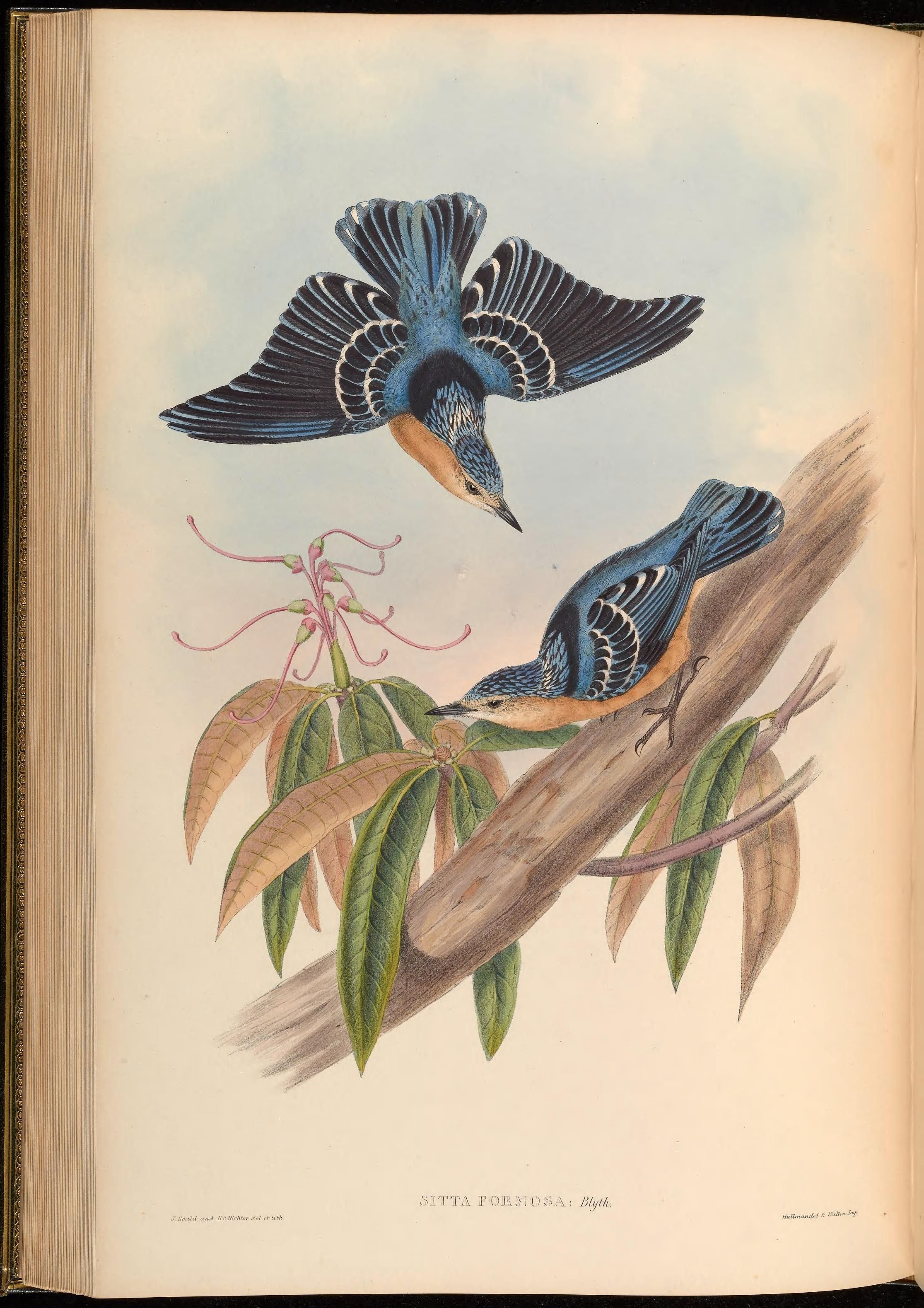| Citation |
|
Description |
Geographic Range [top]
Range Description: Sitta formosa has a broad range encompassing Bhutan, north-east India (with recent records from Arunachal Pradesh, Nagaland and northern West Bengal [A. Choudhury in litt. 2016]), west, north and east Myanmar, south-east Yunnan, China, East (Vogel et al. 2003) and West Tonkin, north Vietnam, and north and central Laos, with a few records from extreme north-west Thailand. It is rare and very locally distributed throughout this range. Recent records suggest that Bhutan, Arunachal Pradesh in India, north Myanmar and Laos support the most important populations.
Countries occurrence:
Native:
Bhutan; China; India; Lao Peoples Democratic Republic; Myanmar; Thailand; Viet Nam
Additional data:
? Continuing decline in area of occupancy (AOO): Yes
? Extreme fluctuations in area of occupancy (AOO): No ? Estimated extent of occurrence (EOO) - km2: 1160000
? Continuing decline in extent of occurrence (EOO): Yes ? Extreme fluctuations in extent of occurrence (EOO): No
? Number of Locations: 11-100 ? Continuing decline in number of locations: Yes
? Extreme fluctuations in the number of locations: No ? Lower elevation limit (metres): 600
? Upper elevation limit (metres): 2400
Range Map: Click here to open the map viewer and explore range.
Population [top]
Population: The population is estimated to number 2,500-9,999 mature individuals, based on an assessment of recent records and surveys by BirdLife International (2001). This equates to 3,750-14,999 individuals, rounded here to 3,500-15,000 individuals.
Trend Justification: A moderate population decline is suspected to be on-going, owing to the moderately rapid loss and degradation of habitats across the range.
Current Population Trend: Decreasing
Additional data:
? Number of mature individuals: 2500-9999 ? Continuing decline of mature individuals: Yes
? Extreme fluctuations: No ? Population severely fragmented: Yes
? No. of subpopulations: 2-100 ? Continuing decline in subpopulations: Yes
? Extreme fluctuations in subpopulations: No ? All individuals in one subpopulation: No
Habitat and Ecology [top]
Habitat and Ecology: It occurs in mature broadleaved forests, although it has been reported from open country with scattered trees in Myanmar. It frequents the middle and upper canopies of large trees draped in mosses, lichens, orchids and other epiphytes. In central Laos it appears to be associated with Fokienia trees. It is essentially resident, but occurs from 1,500-2,400 m in the breeding season, descending at other times, generally not below 600 m, although it has been recorded as low as 300 m in the eastern Himalayas.
Systems: Terrestrial
Continuing decline in area, extent and/or quality of habitat: Yes
Generation Length (years): 4
Movement patterns: Altitudinal Migrant
Threats [top]
Major Threat(s): The main threat is forest loss, degradation and fragmentation, predominantly as a result of shifting cultivation, but more locally large-scale timber extraction (e.g. logging of the valuable Fokienia hodginsii in central Laos and north Vietnam), and overgrazing, burning and wood cutting (north-east India). High hunting pressure in parts of its range is unlikely to be more than a minor threat.
Conservation Actions [top]
Conservation Actions: Conservation Actions Underway
Populations are known to occur in several protected areas, including Thrumshing La National Park (Bhutan), Namdapha National Park, Eagles Nest Wildlife Sanctuary, Sessa orchid Sanctuary, Talle Wildlife Sanctuary, Kamlang Wildlife Sanctuary and Buxa Tiger Reserve (India), Nakai-Nam Theun, Nam Xam and Phou Louay National Biodiversity Conservation Areas (Laos), and also Huanglianshan Nature Reserve (China).
Conservation Actions Proposed
Conduct further surveys for the species in current "gaps" within its broad range to clarify its current distribution and population status. Identify sites supporting key populations of this and other threatened montane species, and make recommendations for their establishment as protected areas, proposing linkage to existing reserves where possible. Campaign against further large-scale montane timber extraction within its range. Promote widespread conservation awareness initiatives in hill and mountain communities aimed at reducing habitat loss and fragmentation resulting from shifting agriculture.
Citation: BirdLife International. 2016. Sitta formosa. The IUCN Red List of Threatened Species 2016: e.T22711231A94285206. http://dx.doi.org/10.2305/IUCN.UK.2016-3.RLTS.T22711231A94285206.en. Downloaded on 12 January 2017.
Disclaimer: To make use of this information, please check the .
Feedback: If you see any errors or have any questions or suggestions on what is shown on this page, please provide us with feedback so that we can correct or extend the information provided
|

